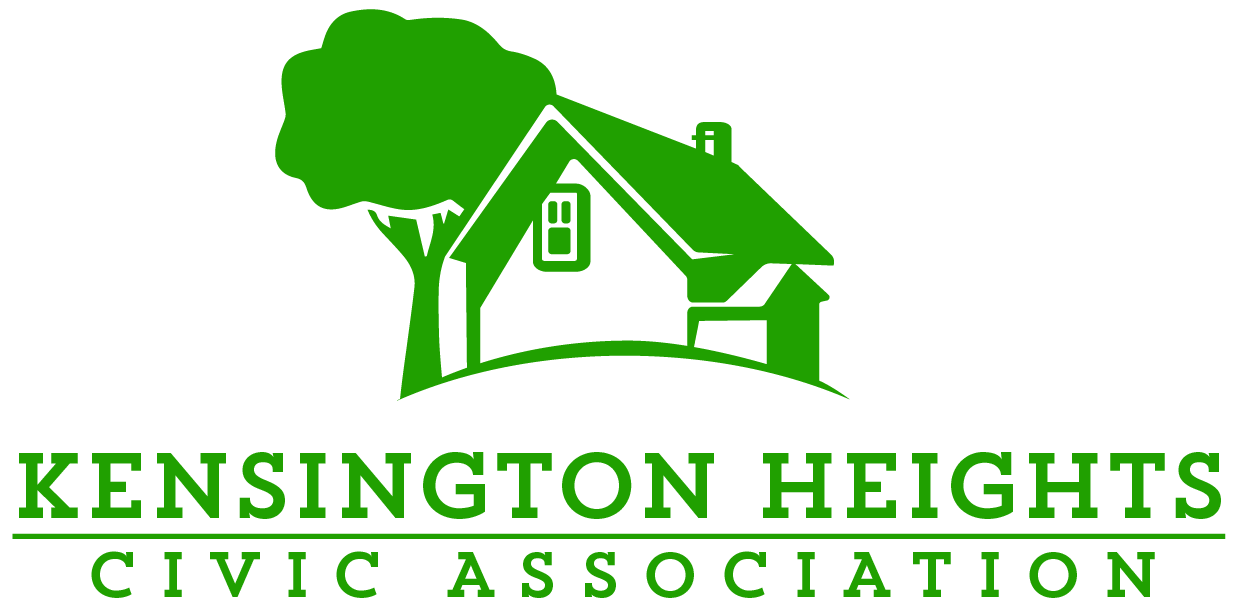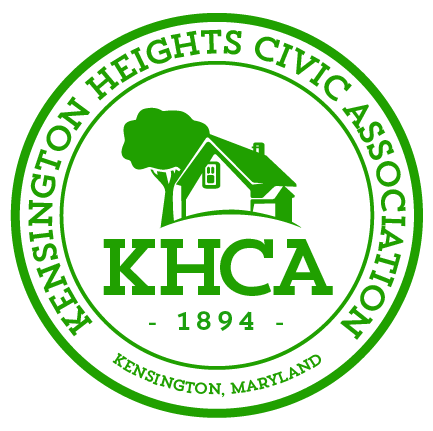
KHCA is a non-partisan neighborhood organization dedicated to representing the interests of homeowners and residents of the Kensington Heights Neighborhood. We are an organization within which homeowners and residents can come together to acquire and disseminate information and support each other in our common goals of maintaining and enhancing the quality of life in our community. KHCA operates without regard to age, color, disability, family responsibilities, gender, gender identity or expression, genetic information, marital status, matriculation, national origin, personal appearance, political affiliation, race, religion, or sexual orientation.
KHCA is also a part of the Montgomery County Civic Federation.
Our goals include:
- To preserve and enhance the quality of life in the Kensington Heights Neighborhood.
- To promote community engagement and provide activities to bring KHCA members together.
- To serve as a liaison between the KHCA members and our elected officials.
KHCA’s Vision is:
- To amplify the civic voice and ensure resident participation in shaping the future of the Kensington Heights Neighborhood and surrounding areas
- To keep the Kensington Heights Neighborhood a livable and safe community, and
- To continue to build a bright future for the place we call home.
Bylaws
The link below includes amendments passed in 2017.
Kensington Heights Boundaries
KHCA Boundaries
Board Members
The KHCA Executive Committee – President, Vice President, Secretary and Treasurer – are elected for a two-year term. The election takes place during a general meeting (or by proxy) where a quorum of 30 dues-paying members is needed. A slate of candidates is identified by a Nominating Committee. Other members of the KHCA Board are persons who have volunteered to serve as committee chairpersons or in other capacities. Elections were last held in November of 2019.
President: Karen Cordry (Torrance Drive)
Vice President: Erl Houston (St. Paul Street)
Secretary: Ann Arevalo (Torrance Drive)
Treasurer: Peggy Alpert (Plyers Mill Rd.)
Immediate Past President: Danila Sheveiko (Melvin Grove Court)
Beautification Chair: Vasna Nontanovan (Decatur Ave.)
Communications Chair: Shruti Bhatnagar (McComas Avenue)
Education Chair: Shruti Bhatnagar (McComas Avenue)
History Chair: Vacant
Land Use Chair: Vacant
Safety Chair: Vacant
Traffic Chair: Andrew Fraser (McComas Avenue)
Newsletter: Vasna Nontanovan (Decatur Ave.), Holly Rogner (On leave)
Website: Ricardo Gonzalez (Casper Street)
History

The community now called Kensington Heights was part of the 1689 land grant of more than 4,200 acres called Joseph’s Park, extending roughly from what is now Georgia Avenue to Rock Creek and including what is now the town of Kensington and part of Wheaton. Originally consisting of large tracts of open farmland, Joseph’s Park was eventually broken into smaller parcels and sold, or leased to tenant farmers.
Just before the Civil War, the Baltimore & Ohio Railroad made public its plans to extend a branch of the railroad through this area from Washington. This announcement excited the real estate market and by the time the first train began stopping at Knowles Station (1873), a small community was already developing there. Between 1880 and 1890, 10 subdivisions were recorded in the area including Kensington Park, North Kensington, and apparently Kensington Heights. The train station’s name was changed from Knowles to Kensington in 1891, and the actual town of Kensington was incorporated in 1894.
Did you know…
The original name of Drumm Avenue was Warner Avenue.
Warner Avenue was named after Brainard Warner, who bought up many farms around the planned Knowles Station and was instrumental in developing the area as a summer retreat for Washington’s elite.
It was Warner who named one subdivision “Kensington Park” because he was impressed with London’s suburb Kensington Garden.
Plyers Mill Road (named after the first Postmaster of Wheaton, George Plyer) was originally called Maynard Avenue.
The first roads in Kensington Heights were McComas Avenue (ending in Truesdell Circle), Warner Avenue, and Faulkner Place (ending in Faulkner Circle).
Kensington Heights included some land on the other side of Jefferson Street (now University Blvd.).
St. Paul Street was originally called Madison Street.






